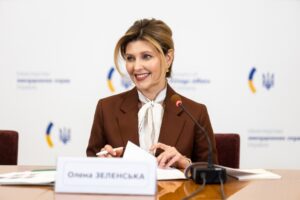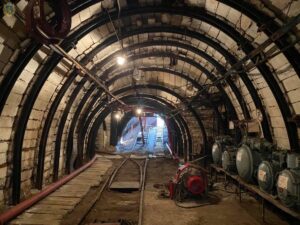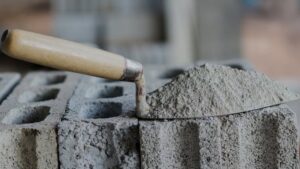
Ukrainian President Volodymyr Zelensky signed law No. 8250, which will allow the State Property Fund (SPF) to resume big privatization and make state property management more efficient by improving the SPF structure.
“The law on the updated structure of the State Property Fund has been signed by the president. The document will improve the organizational structure of the fund: 12 regional branches of separate legal entities will become structural divisions of the SPF. This will create a mechanism for the establishment of market salaries and CRI in all regions and will increase the efficiency of state property management, “- wrote the head of the SPF Rustem Umerov in Facebook on Tuesday.
He recalled that the document also contains provisions for the resumption of large-scale privatization, improving the procedure for managing the sanctioned property, increasing the lease term of state property up to five years.
According to the norms of the law, by the decision of the VAKS, the sub-sanctioned property will be transferred directly to the SPF and the proceeds from the sale will be sent to the Fund for Liquidation of Consequences of Armed Aggression.
Umerov thanked the president, the government and MPs for supporting this important initiative.
Earlier, it was reported that after the mentioned law enters into force, the SPF will independently make managerial decisions on the unsanctioned property: privatization, sale, lease or management.
The law bans unsanctioned individuals and citizens of aggressor countries from holding positions as heads of state-owned companies and members of supervisory boards, and cancels the procedure for obtaining approval from local authorities for directors of state-owned companies that are managed by the SPF.
After the enactment of the law the department expects the increase of income from renting state property by 20-25%, or 100 million UAH per year, as well as the improvement of leased property.
On 30 May, the Rada supported the bill #8250 by 231 votes of people’s deputies with the required minimum of 226 votes.

First Lady of Ukraine Elena Zelenskaya, during her visit to Israel, asked for help from local epidemiologists to overcome the consequences of the Kakhovka reservoir explosion, the press service of the President of Ukraine reported on Tuesday evening.
“Asked for help from Israeli epidemiologists in overcoming the consequences of the explosion of the Kakhovka hydroelectric power plant, which threatens the entire country ecological disaster,” the agency quotes Zelenskaya.
In addition, the first lady met with the wife of the Prime Minister of the State of Israel, Sarah Netanyahu, they discussed the experience of Israel in creating and using the system of early warning of the air threat, which allows more accurate information to citizens about the danger.
The parties did not ignore the topic of children affected by the war: both psychologically and physically. It is noted that Zelenskaya and Netanyahu discussed ways to rehabilitate them.

Ukraine after the war will be very interesting for private investors to develop renewable energy sources, said Harry Boyd Carpenter, managing director for climate strategy and implementation of the European Bank for Reconstruction and Development.
“There’s also going to be a huge wave of investment in renewable energy. Ukraine does have a success story because before the war there was an extraordinary boom in RE – 5 GW of privately financed renewable energy. And that’s the template for Ukraine in the future,” Carpenter said during a discussion on Ukraine’s transition from coal to clean energy ahead of the London Recovery Conference (URC2023), scheduled for June 21-22.
At the same time, according to him, Ukraine will also receive public sector money, but it should be spent primarily on the development of nuclear energy, as well as on construction and reconstruction of networks, to ensure, among other things, the work of decentralized system of renewable energy.
At the same time, the top manager of the EBRD called the commitment of Ukraine to abandon coal in power generation extremely important, noting that this course determines the further development of not only energy, but also the economy and the whole country.
He noted that the contours of the energy sector of Ukraine in the future are quite clear – it will be built on nuclear and renewable energy, and the country has huge resources in all these areas.
At the same time, Carpenter noted that RES used to develop under conditions of “imperfect market and tariffs”, calling it a difficult transition period, but expressed his belief that in the future their development will be based on three fundamental pillars that will remove these problems.
“The first will be a commitment to a green future (…). The second is market reforms. We need a well-functioning, transparent, clearly delineated market. And the third will be integration with the European energy system, which is already in full swing,” the EBRD top manager pointed out.
Besides, Carpenter assured that EBRD intends to continue to support Ukraine financially.
“We will provide Ukraine with EUR3 billion of support. And we are already halfway there. Much of this has come in the form of liquidity support for the energy sector – Naftogaz and Ukrenergo,” the banker emphasized.
Announcing URC2023 on June, 19 First vice-premier Yulia Sviridenko announced the goals in 10 years to show the new Ukraine and to reach over 100 GW of new green power generation capacity, to produce 40 million tons of “green” steel and to bring GDP to $1 trillion per year from $161 billion in 2022.
As reported, at the end of December 2022, NEC Ukrenergo, inter alia, attracted EUR300 million of credit funds from the EBRD to purchase equipment to restore substations subjected to massive Russian missile strikes, as well as to replenish working capital.
NJSC Naftogaz attracted a EUR300 million loan from the EBRD at the end of last year, and later, in early 2023, it received a grant of nearly EUR200 million for the purchase of gas.
According to the president of the bank, Odile Renaud-Basso, the EBRD in 2022 increased the amount of investment in projects in Ukraine to EUR1.7 billion compared to approximately EUR1 billion that it invested annually before. It plans to invest EUR3bn in Ukraine during 2022-2023.

Chervonograd Lviv region has developed a project of industrial park to attract investors in the development of new businesses that could replace the coal mines located in the community, to be closed as part of the transformation of coal regions, said Mayor Andriy Zalivskyy.
“We have worked out for potential investors a project of industrial park on 80 hectares plus there is 20 hectares of territories of mines themselves. In addition, we have found more than 110 hectares of land that will not be used in agriculture and can go under the SES location,” he said during a discussion on Ukraine’s transition from coal to clean energy at the conference on reconstruction in London (URC2023), scheduled for June 21-22.
Calling on investors to develop new businesses, he stressed that “the city is open to cooperation and investment, ready to give land on favorable terms, since the industrial park allows it.”
He also called the opening of a factory for the production of solar panels and a factory for the production of heat pumps “a small dream”. At the same time, Zalivsky pointed out that the production of related goods for maintenance of wind energy could also be interesting for investors, because, according to him, “it is consumables, which will be very important”. At the same time, he noted that next year two companies have promised to start building two wind power plants in the community.
“Also on the territory of one of the mines we are planning a plant for processing of solid waste, as there is a project, and it is possible to produce biogas and biomethane,” – said the mayor.
He has underlined, that in case of opening of productions the engineering and technical personnel of mines could be used and “we would retain these people”, and in general, the community has a large resource of labor force.
At the same time, he pointed out that the city is already working on training new personnel in educational institutions.
“Last year we started retraining or training young people in new specialties. We replaced one miner’s specialty with a specialty in solar panel repair. A week later we recruited a whole group. This year we also want to open new specialties, connected with alternative sources”, – told the mayor.
In addition, according to him, the city together with the GIZ Ukraine (German Society for International Cooperation), is working on the implementation of the Innovation Hub.
He stressed that people are already aware of the reality of the closure of mines, but they will be easier to move to another production than to leave their homes, so they need to provide jobs and infrastructure for life and recreation.
“Out of 12 mines in the community, there are six left, employing more than 6.5 thousand people. Of these, 1,500 are at war. Many have died. And we have to take care of their families if these enterprises close. Thank you to the Ministry of Energy and GIZ, who chose us and help us implement this project. We are faced with the task of deciding what to replace the mines with,” the mayor of Chervonograd described the situation.
He noted that in the strategy of the city it is called the industrial heart of the Lviv region, because “we are the only ones who choose industry as the basis for the development of its territory.
As it was reported, Chervonohrad was selected to implement a pilot project to transform coal regions of Ukraine as part of the project “Supporting Structural Change in Coal Regions of Ukraine” funded by the German government and implemented by GIZ Ukraine (German Society for International Cooperation, Deutsche Gesellschaft für Internationale Zusammenarbeit).
Earlier this year, the Ministry of Energy announced that Ukraine would create a fund for the transformation of coal regions with the provision of financial contributions to it for the implementation of projects, in particular on the physical closure of coal mines.

Italian cement producer Buzzi, through its subsidiary Dyckerhoff GmbH, has reached an agreement to sell part of its business in Eastern Europe to CRH, a leading provider of building materials solutions, for EUR0.1 billion, according to an official website on Tuesday.
As clarified in the release, the deals include a business in Ukraine and assets for the production of ready-mix concrete in Eastern Slovakia. Completion of the deal in Ukraine depends on obtaining the necessary regulatory approvals and is expected in 2024.
Buzzi Unicem SpA (Italy) combines businesses producing cement, concrete, sand, crushed stone, etc. The main activity of the group is the production of cement, which is produced in its own enterprises in Germany, the USA, Luxembourg, the Czech Republic, Poland, Russia and Ukraine. Dikerhoff Cement Ukraine PJSC, the Ukrainian branch of Buzzi, has branches set up at Volyn-Cement (Zdolbuniv, Rivne region) and YuGcement (Olshanske, Mykolaiv region) plants. The group also operates in the ready-mix concrete sector in Kiev, Odessa and Nikolaev.
Buzzi operates six ready-mix concrete plants in Eastern Slovakia.
It was reported in March 2023 that Italian cement producer Buzzi Unicem was listed by the National Agency for Prevention of Corruption (NAPC) as an international sponsor of war. Buzzi operates in Russia through OOO SLK Cement, which owns two cement plants, Sukholozhskcement and Korkino, a terminal in Omsk and the transport company Cemtrans. According to the NAZK, the company is one of the five leaders of the Russian cement industry.
Irish CRH Plc, the largest manufacturer of building materials in the world, in Russia owned six plants of building mixes, announced its withdrawal from the Russian market.
CRH entered the market of Ukraine in 1999, acquiring Kamenets-Podolsky cement plant in Khmelnitsky region. At the moment CRH also includes Odessa cement plant and Nikolaevcement (Lvov region).
A separate direction of CRH business in Ukraine is the production of concrete and reinforced concrete products. PoliBeton Energo’s Bila Tserkva Concrete Plant is a specialized enterprise that produces supports for power transmission lines. The PoliBeton concrete unit in the north of Odessa joined CRH in 2020.